Autism And Deafness
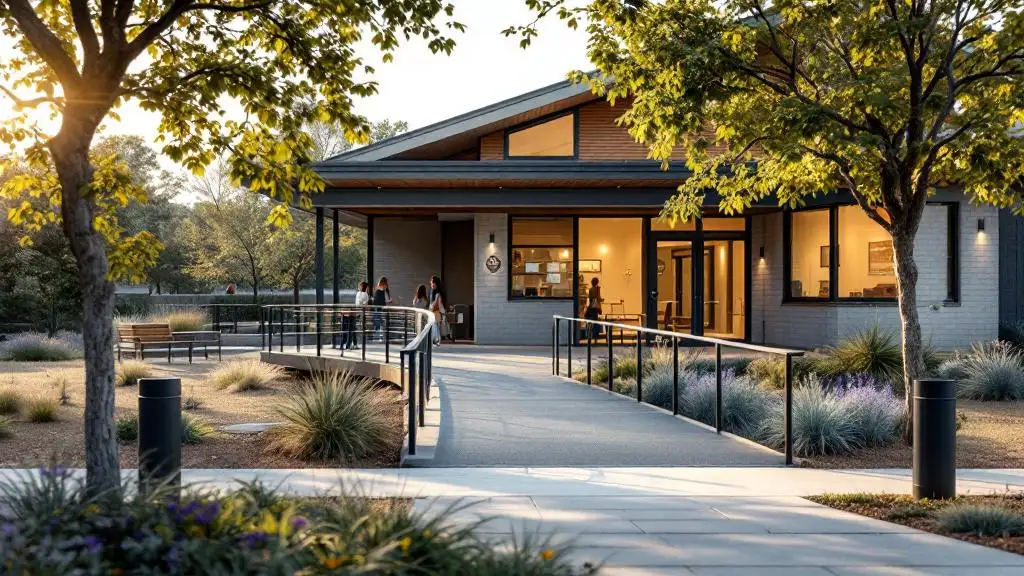

Introduction: Unraveling Complex Interactions
The intersection of autism and deafness presents unique challenges and opportunities for understanding developmental conditions. While each condition has distinct features, their co-occurrence requires careful assessment, specialized support strategies, and ongoing research. This article delves into the relationship between autism and deafness, exploring signs, assessment methods, scientific insights, and resources available to support affected individuals and their families.
Understanding the Relationship Between Autism and Deafness
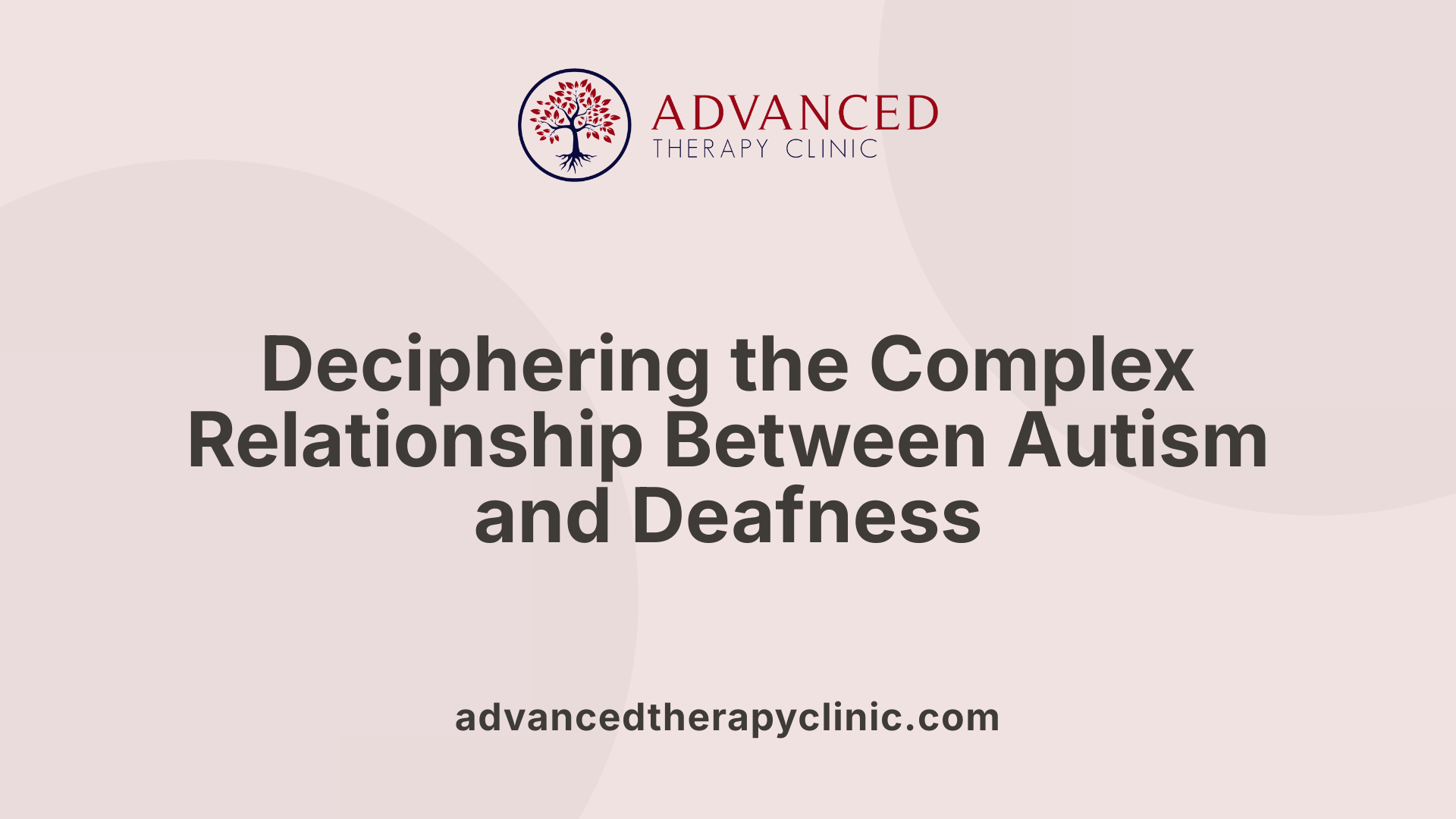
What is the relationship between autism and deafness?
The connection between autism spectrum disorder (ASD) and deafness is intricate, as both are distinct conditions that can, however, co-occur. Research indicates that children who are deaf or hard of hearing (D/HH) are more likely to also have autism, with estimates showing the prevalence of ASD in this group ranges from 7% to 9%. This is notably higher than the 1.7% to 2% found in the general population.
Several factors may explain this overlap. For instance, genetic and biological pathways could contribute to both conditions. Recent studies on mouse models with genetic mutations such as MEF2C deficiency reveal that hearing impairments—particularly in auditory nerve function—and immune system responses can be linked to autism-like behaviors. These findings suggest that certain genetic factors influence both auditory processing and neurodevelopment, highlighting potential shared biological mechanisms.
Moreover, some common genetic syndromes affecting neurodevelopment encompass both hearing loss and ASD, further evidencing shared etiologies. Early developmental influences, such as sensory processing difficulties, can also impact communication and social interaction, which are core aspects of ASD.
Many children with hearing impairments display behaviors that could be mistaken for autism—delayed speech, poor response to name, echolalia, sensory-seeking behaviors, and distorted speech patterns. Because these signs overlap, it can be challenging to differentiate between hearing loss effects and autism without thorough assessments.
The high rate of co-occurrence makes precise diagnosis essential. On average, deaf or hard-of-hearing children are diagnosed with autism around age 5.5 to 6.5, which is later than the typical age of 3 in children with normal hearing. Proper and early evaluation—using specially adapted assessment tools and multidisciplinary approaches—helps ensure that children receive appropriate interventions.
In summary, the relationship between autism and deafness involves overlapping developmental features, shared genetic vulnerabilities, and complex diagnosis. Recognizing this interplay allows clinicians, educators, and families to support affected children more effectively, using tailored strategies that address both their hearing and neurodevelopmental needs.
Signs and Symptoms of Autism in Deaf or Hard-of-Hearing Children

What are the signs and symptoms of autism in deaf or hard of hearing children?
Children with deafness or hearing loss can show signs that are similar to those of autism, which can lead to challenges in accurate diagnosis. Recognizing these signs is important for timely support and intervention.
One of the most common indicators is a delay in language development. Deaf children often experience delays in acquiring spoken language due to environmental factors and communication barriers. However, in children on the autism spectrum, language delays may also stem from neurological differences, making it crucial to distinguish the cause.
In addition to delayed speech, children may exhibit limited gestures and poor response to their name. These behaviors, along with difficulties in making eye contact and engaging in joint attention — the shared focus on an object or activity — are typical signs that may suggest autism.
Repetitive behaviors and strong routines often emerge as well. Children might prefer predictable patterns and resist changes, which can be part of autistic traits.
Sensory sensitivities are also common. Children with autism frequently experience heightened or diminished responses to sensory stimuli like sound and light. For deaf children, overlapping issues such as hyperacusis (increased sound sensitivity) or reduced auditory responsiveness can complicate the picture.
Withdrawn behavior, including social withdrawal or indifference towards peers and caregivers, can be observed. Some children might prefer to play alone or engage in repetitive play activities, which are characteristic autistic behaviors but can also appear in children with deafness.
It's important to note that some behaviors, such as avoidance of eye contact or limited gestures, are typical in deaf children due to communication methods like sign language, but their persistence or severity can be signs of autism.
Diagnosing autism in deaf children requires a careful, multidisciplinary approach that differentiates behaviors related to hearing loss from those indicative of autism. Professional assessments often involve adapted tools and detailed developmental histories.
Early detection allows for targeted interventions, such as visual supports and communication strategies, which significantly improve outcomes.
In summary, autism in deaf or hard-of-hearing children manifests through a combination of language delays, social interaction difficulties, and sensory sensitivities, with some overlapping signs that demand specialized assessment and support strategies.
Overlap and Distinctions Between Autism and Hearing Impairments

How do autism and hearing impairments overlap and differ?
Autism spectrum disorder (ASD) and hearing impairments share several behavioral features, which can complicate early identification and diagnosis. Both conditions frequently present with language delays, social withdrawal, and limited gestures. Behaviors like echolalia (repeating words or phrases) and sensory sensitivities are common to both, especially in young children. These overlapping signs make it challenging for professionals to distinguish whether a child's behavior stems from autism, hearing loss, or a combination of both.
Children with hearing loss may exhibit behaviors such as poor eye contact, limited gestures, and social withdrawal, all of which are also hallmark signs of autism. Consequently, children who are deaf or hard of hearing are often diagnosed with autism at a later age—around 5.5 to 6.5 years—compared to their hearing counterparts, who are typically diagnosed around age 3.
While autism involves persistent behavioral patterns, difficulties in social interaction, and sensory sensitivities that extend beyond auditory issues, hearing impairments primarily affect auditory communication capabilities. However, the resulting communication challenges—like delayed speech or difficulty responding to spoken language—can resemble autism-related behaviors.
Assessment challenges arise because traditional autism diagnostic tools, such as the Autism Diagnostic Observation Schedule (ADOS-2) and the Autism Diagnostic Interview-Revised (ADI-R), were initially designed for children with typical hearing abilities. These tools often rely on spoken language and non-verbal cues like lip-reading and gestures, which may not be applicable or effective for children with hearing loss.
To address this, clinicians have adapted assessment measures to incorporate sign language and visual supports. For instance, assessment versions that include sign language interpreters, visual aids, or modified tasks have shown promising accuracy. Despite these advances, further validation and standardization of these adapted tools are ongoing.
Recent research points to a potential link between sensory processing difficulties, auditory nerve function, and autism. Studies involving animal models reveal that anomalies in auditory nerve activity and immune system interactions might contribute to autism features, especially in children with sensory processing issues. This underscores the importance of comprehensive evaluations that include sensory and auditory assessments alongside behavioral observations.
In summary, differentiating autism from hearing impairments requires a multidisciplinary approach, tailored assessment methods, and awareness of overlapping signs. Early and accurate diagnosis enables targeted interventions and better support for affected children.
| Aspect | Overlap | Distinction | Diagnostic Approaches | |---------|---------|--------------|------------------------| | Behaviors | Language delays, social withdrawal, echolalia, sensory sensitivities | Autism involves persistent behavioral patterns beyond sensory deficits | Use adapted assessment tools, incorporate sign language and visual aids | | Communication | Difficulties with spoken language, reliance on gestures/signs | Hearing impairment primarily affects auditory communication | Audiological evaluations, speech-language assessments | | Developmental Timeline | Delayed diagnosis for deaf children (around age 5.5-6.5) | Autism typically diagnosed around age 3 | Multidisciplinary assessments, early screening programs | | Underlying Causes | Sensory processing issues, immune response, auditory nerve function | Underlying sensory deficit related to hearing anatomy | | Treatment Focus | Visual supports, sign language, and tailored behavioral interventions | Speech therapy, auditory enhancement |
What are the assessment adaptations and diagnostic challenges?
Assessing autism in children with hearing loss presents unique challenges. Standard diagnostic tools such as the ADOS-2 and ADI-R are less effective when used without modifications, as they depend heavily on verbal communication and behaviors that might be influenced by hearing ability.
Clinicians have responded by developing adapted versions of these tools that include sign language interpretation, visual aids, and tailored tasks suited for children who communicate visually rather than verbally. These modifications aim to improve the sensitivity and specificity of autism assessments in deaf and hard-of-hearing populations.
Recent validation studies have shown that these adapted assessment instruments have promising results, although ongoing research seeks to strengthen their reliability and standardization. Virtual assessment methods, especially relevant during the COVID-19 pandemic, have also emerged. These include caregiver-mediated tele-assessments and modified protocols with PPE to ensure safety and accuracy.
Multidisciplinary teams are crucial in the diagnostic process, combining behavioral observation, developmental history, audiological testing, and specialized assessments. Collaboration among audiologists, speech-language pathologists, psychologists, and educators helps interpret behaviors within the context of both conditions.
Early detection and diagnosis are vital. For children who show signs later in development, comprehensive hearing assessments are necessary to differentiate between hearing-related communication delays and autism. In some cases, early screening programs like EHDI facilitate prompt diagnosis. When signs are subtle or ambiguous, a detailed developmental history and careful observation of non-verbal cues—such as children echoing sign language toward themselves—can help clarify the diagnosis.
In conclusion, assessing autism in deaf children requires specialized approaches and ongoing validation of adapted tools. Recognizing the nuanced differences and overlaps enables earlier, more accurate diagnoses and tailored interventions.
Implications of Hearing Impairments on Autism Diagnosis and Development

What are the implications of hearing impairments for autism diagnosis and development?
Hearing impairments can have a significant impact on the diagnosis and development of autism spectrum disorder (ASD). Due to overlapping behaviors—such as delayed language acquisition, reduced response to social cues like name calling, echolalia, restricted interests, and sensory sensitivities—clinicians often find it challenging to distinguish between the effects of deafness and those of autism.
The high co-occurrence rates, estimated at about 7% to 9% among children who are Deaf or Hard of Hearing (D/HH), indicate that these conditions frequently coexist. Additionally, genetic studies have identified some shared origins, including certain genetic syndromes and prematurity, which can predispose children to both hearing loss and ASD.
Standard tools for autism assessment, such as the Autism Diagnostic Observation Schedule (ADOS-2) and the Autism Diagnostic Interview-Revised (ADI-R), are primarily designed for hearing children and are not fully validated for use in deaf or hard-of-hearing populations. This limitation often results in delays—sometimes averaging around three years—before children receive an accurate diagnosis.
Many deaf children showing signs of autism are misdiagnosed or undiagnosed due to phenotypic overlap and communication barriers. For instance, behaviors like limited eye contact or gesture use could stem from deafness or autism.
Recent advancements involve adapted assessment procedures tailored specifically for deaf individuals. These modified tools incorporate sign language and visual supports, improving sensitivity and specificity. Although promising, these assessments still require further validation to ensure accuracy across diverse deaf populations.
Early and precise diagnosis is crucial to accessing targeted interventions which can significantly influence developmental outcomes. The ongoing development of multidisciplinary assessment methods—including behavioral observations, detailed developmental histories, audiological evaluations, and communication-focused testing—is vital.
Collaborations among audiologists, speech-language pathologists, psychologists, and educational specialists are essential for comprehensive evaluations. Additionally, healthcare providers are increasingly adopting a model of early screening integrated with culturally and linguistically appropriate assessments to mitigate diagnostic delays.
Understanding how sensory processing differences influence autism development among children with hearing impairments remains a focus of ongoing research. Particularly, scientists are exploring how sensory sensitivities, like hyperacusis or auditory processing difficulties, intersect with behavioral features of ASD.
In summary, hearing impairments complicate autism diagnosis and development, demanding nuanced, multidisciplinary, and culturally responsive approaches. Advancements in assessment tools, early intervention, and increased awareness can improve the accuracy and timeliness of diagnoses, ultimately supporting better developmental trajectories for children with both conditions.
| Aspect | Challenges | Solutions | Further Developments |
|---|---|---|---|
| Diagnostic accuracy | Overlap in behaviors, communication barriers | Adapted assessment tools, multidisciplinary teams | Validation of newer assessment measures specific for deaf children |
| Diagnostic delays | Average 3 years in some cases | Early detection programs, increased training | Integration of technology and remote assessments |
| Shared etiologies | Genetic syndromes, prematurity | Genetic testing, family history review | Ongoing research on genetic links and sensory interactions |
| Multidisciplinary approach | Need for coordination among specialists | Team-based evaluations, culturally sensitive protocols | Development of standardized multidisciplinary protocols |
Addressing these complex issues requires ongoing research and training to refine diagnostic methods and improve support strategies for children at the intersection of hearing impairments and autism.
Scientific Research on Link Between Hearing Loss and Autism Spectrum Disorder
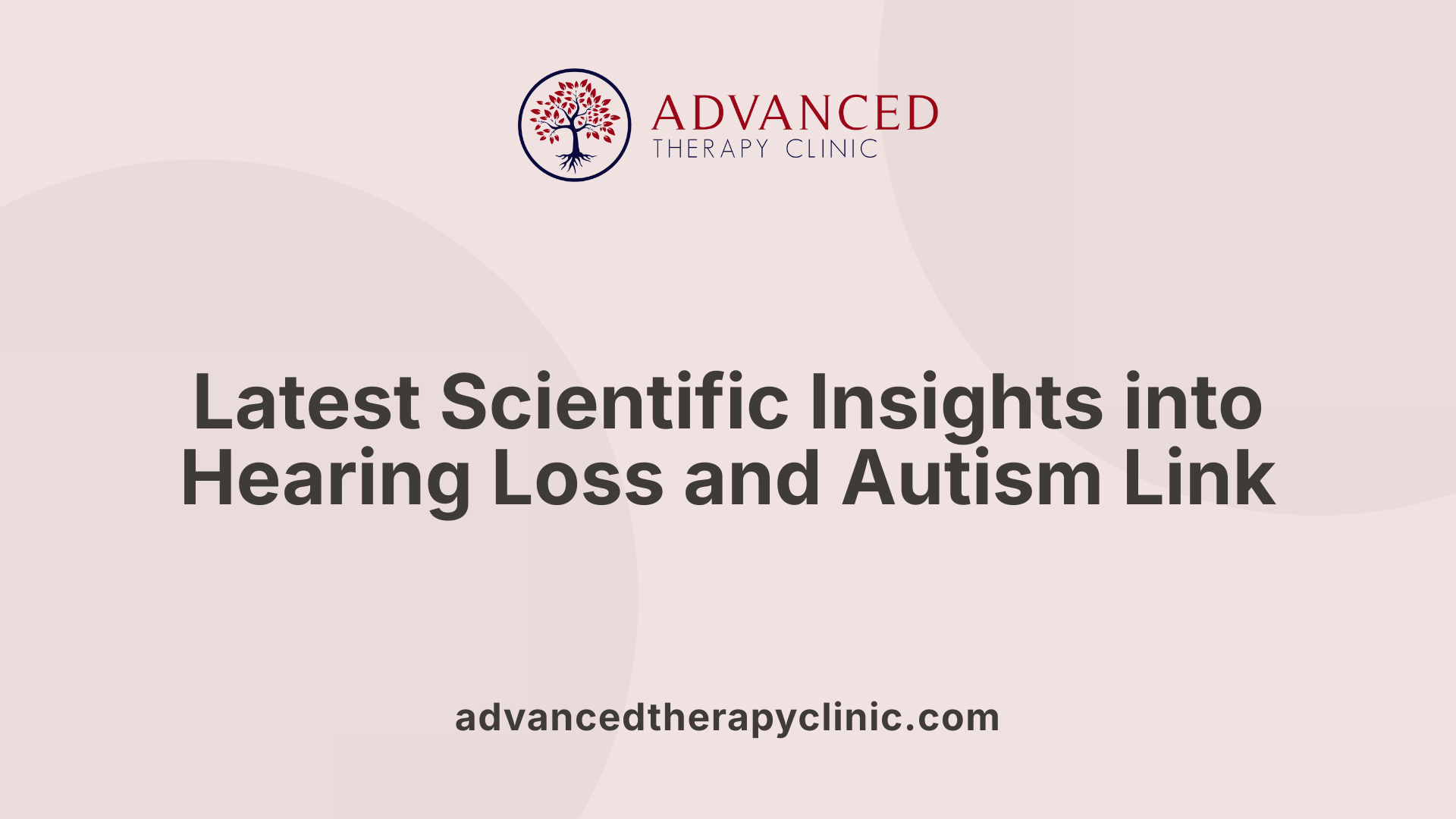
What does scientific research say about the link between hearing loss and autism spectrum disorder?
Research indicates a significant association between hearing issues and autism spectrum disorder (ASD). Studies show that children with ASD are more likely to exhibit audiological abnormalities, such as hearing impairments, sound sensitivities, and difficulties with auditory processing.
One notable finding involves animal models, especially mice with genetic mutations such as the deficiency of the MEF2C gene. These mice display reduced activity in the auditory nerve, signs of cellular degeneration, and increased immune response, including activation of immune cells and glial cells. These observations suggest that hearing impairment and immune system reactions could be involved in the neural mechanisms underpinning ASD.
In children, sensory abnormalities like hyperacusis (increased sensitivity to sounds) and subclinical hearing loss—especially at particular frequencies—are common. Studies have found that about 55% of children with ASD show abnormalities in audiological testing, much higher than the 14.9% seen in typically developing peers and well above the 6% estimate in the general population.
Moreover, children with hearing loss, especially those who are deaf or hard of hearing, are diagnosed with autism at later ages—often around 5.5 to 6.5 years—compared to about 3 years for hearing children. This delay highlights the overlap in symptoms such as language delays, poor response to name, echolalia, and social withdrawal, which can be misinterpreted as solely hearing problems.
Recent large-scale screenings and assessments reveal that certain audiological measures, particularly at middle-range frequencies like 2000Hz, are strongly associated with speech and language performance in children with ASD. This correlation emphasizes that subtle hearing issues, not just obvious hearing loss, can influence communication abilities.
Research into genetic and molecular mechanisms, such as the recent studies on mice, emphasizes the role of the immune system and neural inflammation in ASD. These findings open new avenues for understanding the condition’s complexity, including how auditory nerve function and immune responses affect neural development.
In summary, current scientific evidence underscores a complex, intertwined relationship between auditory function and ASD. Early identification of hearing abnormalities, along with interventions tailored for both hearing and communication needs, can improve outcomes for affected individuals.
Supporting Individuals with Autism and Hearing Impairments
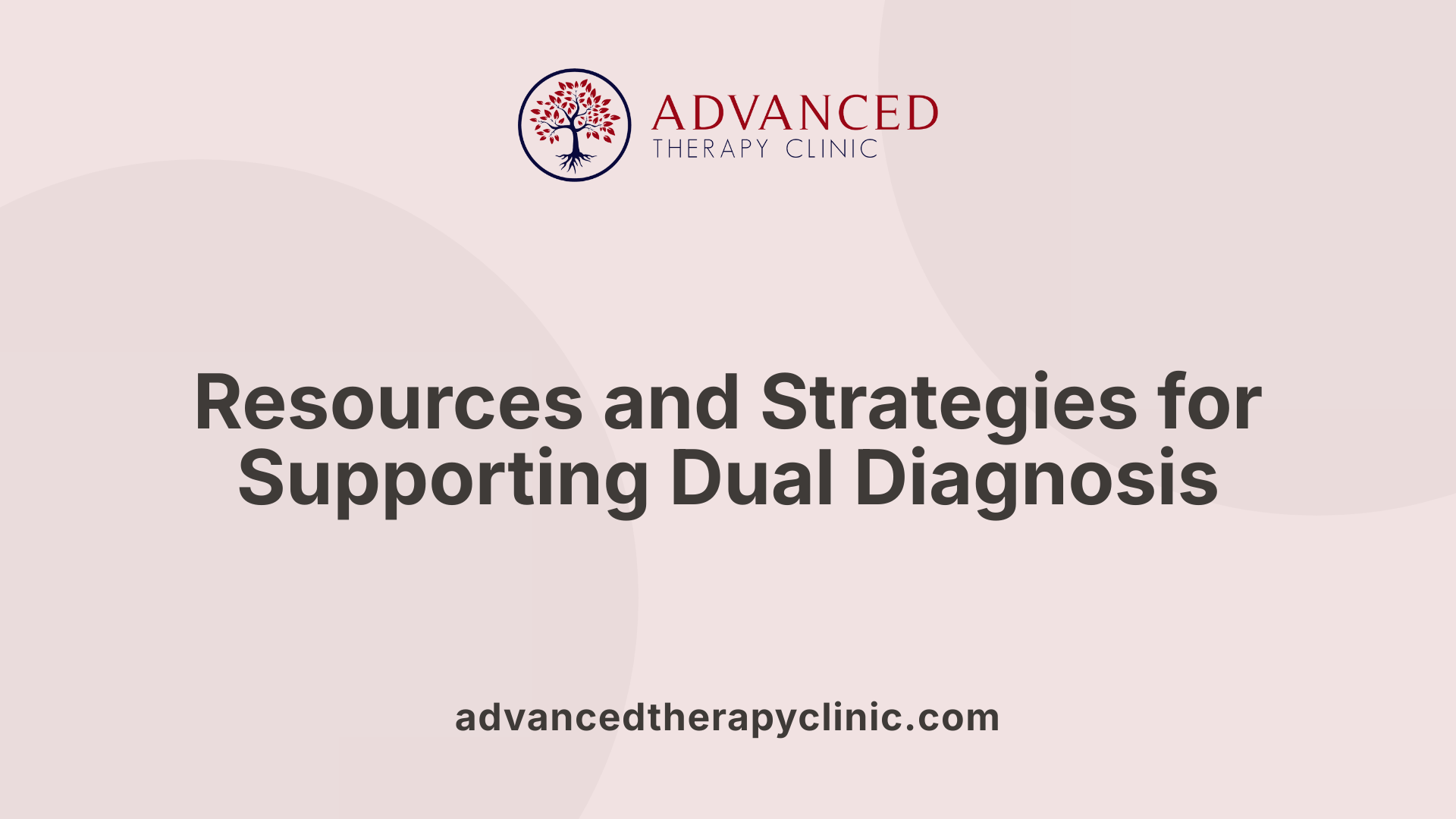
What resources are available to support individuals with both autism and hearing impairments?
Supporting individuals who experience both autism and hearing impairments requires a multidisciplinary approach, leveraging specialized resources tailored to meet their unique needs. These resources encompass educational programs, therapeutic interventions, community networks, and research initiatives.
One of the primary supports are dedicated educational programs designed to accommodate the communication styles of deaf and hard-of-hearing children with autism. For example, the Autism Expansion program employs a visual-bilingual model that integrates American Sign Language (ASL) and English to foster language development and improve communication. These programs often include sensory rooms equipped with swings, trampolines, and other equipment to help children regulate their sensory input.
Speech and language therapies adapted for deaf or hard-of-hearing individuals are vital. Such therapies focus on augmentative and alternative communication methods, using visual supports, sign language, or assistive devices to enhance expressive and receptive language skills. Audiological services also play a central role in diagnosing and managing hearing impairments, with early screening through programs like the Early Hearing Detection and Intervention (EHDI) ensuring prompt treatment.
Assessments for autism in deaf individuals often require modifications of standard tools such as the Autism Diagnostic Observation Schedule (ADOS-2) and the Autism Diagnostic Interview-Revised (ADI-R), incorporating sign language and visual aids. Professionals with expertise in both conditions facilitate accurate diagnoses and tailored intervention plans.
Community and peer support networks are essential for families and individuals. Organizations like the ARI Deaf/HOH & Blind/Visually Impaired Network connect members with local services, resources, and peer support groups, often at no cost, fostering shared experiences and mutual assistance.
Research efforts, including the Deaf Autism Project led by Aaron Shield, focus on understanding how autism affects sign language development and learning in deaf children. Their findings contribute to the development of more effective treatments and educational strategies tailored for this population.
How do specialized programs and therapies assist in development?
Specialized educational and therapeutic interventions aim to improve communication, social skills, and behavior among children with autism and hearing impairments. Visual communication methods, such as sign language and visual supports, are prioritized because they align with the sensory processing preferences of these children.
Speech and language therapy adapted for deaf children often incorporates visual cues, gestures, and sign language. Behavioral supports, including social stories and emotional recognition tools, help children understand and regulate their feelings.
Sensory-based supports, like sensory rooms, aid in calming children and preparing them for learning. These environments are designed to meet sensory needs and reduce anxiety or overstimulation.
Behavioral strategies, such as the ABC approach (Antecedent, Behavior, Consequence), enable caregivers and educators to analyze challenging behaviors or meltdowns, identifying triggers and developing appropriate responses.
How can community and organizational support improve outcomes?
Community organizations and support networks are integral in providing continuous assistance beyond the classroom. They facilitate access to resources, training, and peer mentorship, which are critical for long-term development.
Specialist-led programs like the Autism Expansion program are inclusive of children from age 12 to 22, offering options like residential and day schooling. These settings focus on integrating communication technologies with behavioral and clinical supports.
Furthermore, increasing awareness and research about autism in deaf individuals, including adults, promotes early intervention, reduces misunderstandings, and enhances life quality. For example, research on hearing impairment's biological links to autism and immune system interactions contributes to comprehensive healthcare strategies.
Integration of research, clinical expertise, and community efforts continues to advance understanding and support for individuals at the intersection of autism and hearing loss.
| Resource Type | Description | Example Organizations or Initiatives |
|---|---|---|
| Educational Programs | Visual-bilingual models, adaptive curricula | Autism Expansion Program, Deaf Autism Project |
| Therapeutic Services | Speech, language, behavioral interventions | Gallaudet Psychology Clinic, local audiologists |
| Community Support | Family networks, peer mentorship | ARI Deaf/HOH & Blind/Visually Impaired Network |
| Research & Development | Studies on autism and hearing, intervention strategies | MUSC hearing impairment studies, Deaf Autism Project |
| Policy & Early Screening | Early detection protocols, legislation | EHDI program, Newborn screening initiatives |
Search Tips to Find More Resources
Searching for "Resources for autism and deafness support," "educational programs," "therapy options," and "community support" will yield comprehensive information to guide families and professionals. Visiting organizations like Gallaudet University, the Hearing Health Foundation, and local autism societies can provide tailored assistance.
By utilizing these diverse resources, support systems are better positioned to enhance communication, social integration, and overall quality of life for individuals with both autism and hearing impairments.
Conclusion: Moving Forward with Understanding and Support
Enhancing our understanding of the complex relationship between autism and deafness is crucial for early diagnosis, tailored interventions, and effective support. Multidisciplinary approaches, adapted assessment tools, and specialized educational programs play vital roles in improving outcomes. Ongoing research continues to shed light on biological mechanisms and optimal strategies for intervention, emphasizing the importance of awareness, collaboration, and resource availability to help individuals navigate their unique developmental journeys. Recognizing the distinct yet intertwined nature of autism and hearing impairments fosters a more inclusive and supportive environment for affected individuals and their families.
References
- Deafness and autism
- Assessing Autism in Deaf/Hard-of-Hearing Youths
- Gallaudet psychology expert raises awareness about ...
- Beyond the brain: A link between hearing loss and autism ...
- The Deaf Autism Project
- How autism and auditory processing disorder affect hearing
- Is It Autism or Hearing Loss?
- Audiometric profiles in Autism Spectrum Disorders
Recent articles

The Benefits of ABA Therapy for Sibling Relationships and Family Bonds
Strengthening Family Ties Through Applied Behavior Analysis

How Speech Therapy Assists with Improving Verbal and Nonverbal Communication
Unlocking Communication Potential: The Role of Speech Therapy
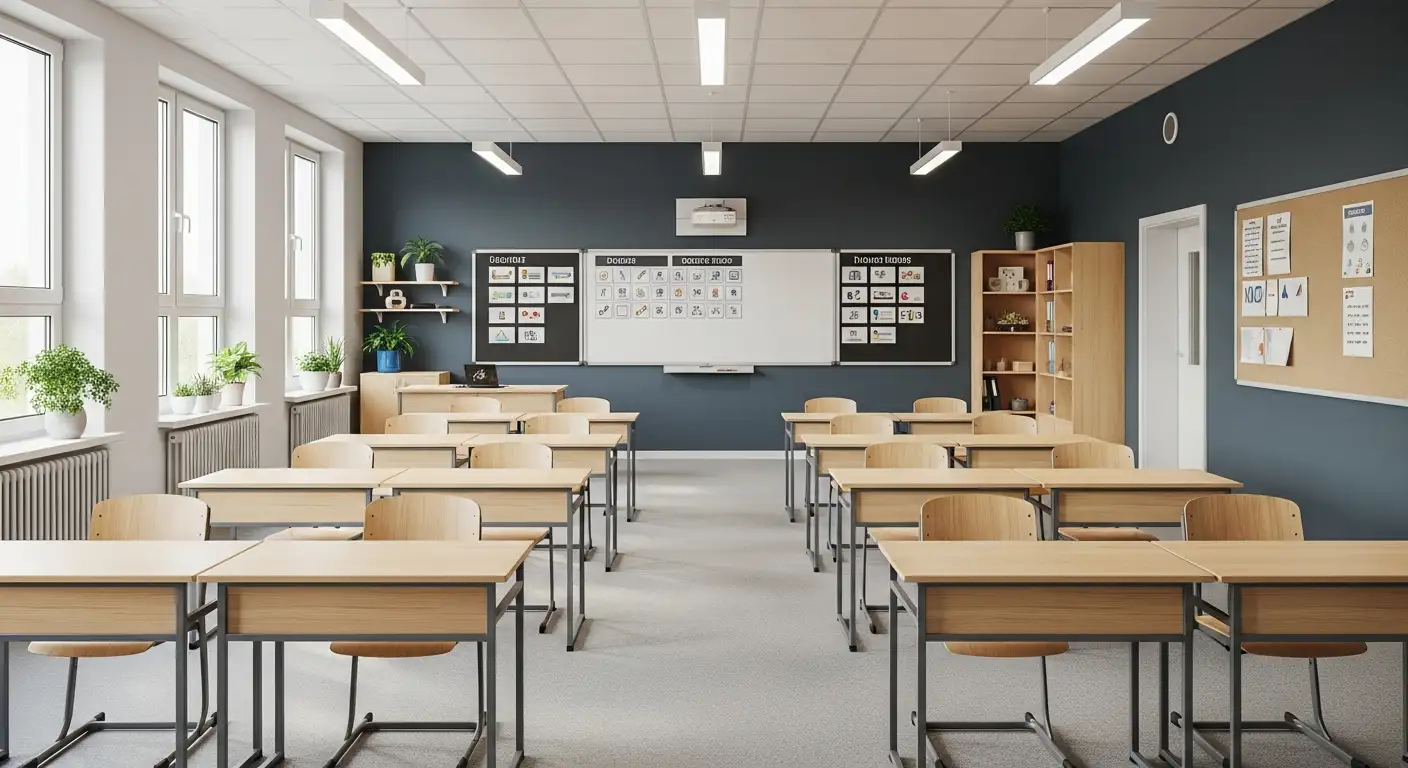
Supporting Autism During Transitions
Strategies and Therapies to Navigate Transitions for Children with Autism

Low-Functioning Autism
Understanding Support and Therapies for Autism Spectrum Disorder Level 3
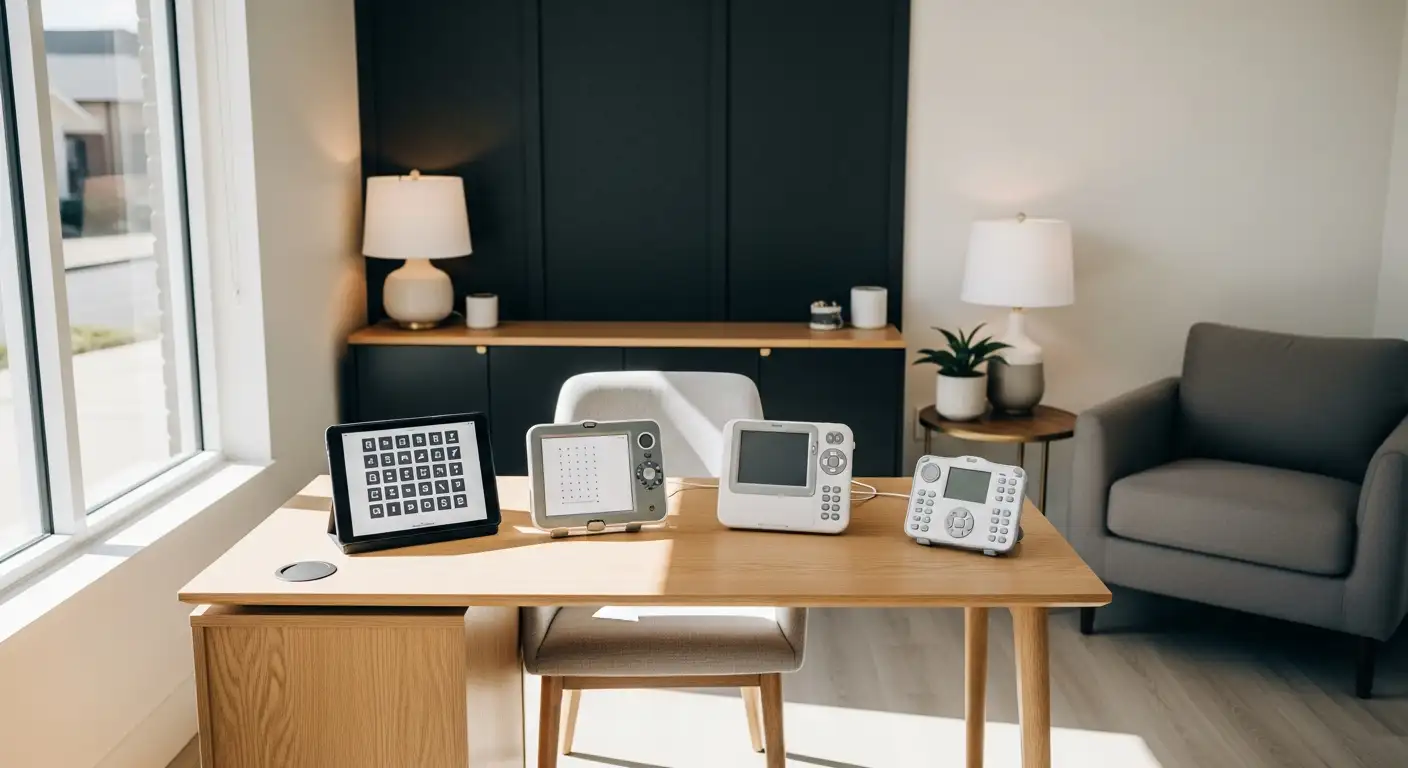
How Speech Devices Enhance Communication for Nonverbal Children
Transforming Communication: The Role of Speech Devices for Nonverbal Children

TEACCH Method For Autism
Comprehensive Therapeutic Approaches for Autism Spectrum Disorder


